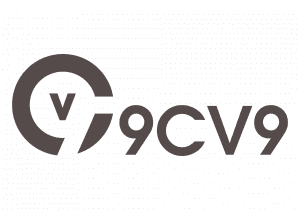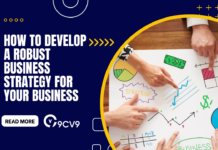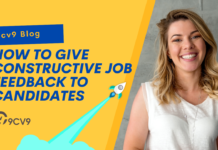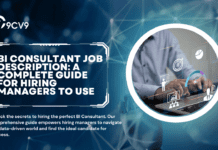Key Takeaways
- Setting clear goals and using microlearning techniques can significantly enhance skill acquisition speed and retention.
- Online learning platforms and real-life projects offer hands-on experience and flexible learning paths.
- Joining peer communities and applying the 80/20 rule helps optimize learning with focused, high-impact efforts.
In today’s fast-paced and constantly evolving world, the ability to acquire new skills is no longer optional—it’s essential. Whether you’re striving to stay competitive in your career, transitioning into a new industry, launching a personal project, or simply pursuing self-improvement, learning new skills quickly and effectively can give you a major edge. From mastering digital tools and programming languages to developing soft skills like leadership and communication, skill acquisition has become a core pillar of both professional and personal development.

The job market in 2025 demands agility, adaptability, and a proactive mindset. Companies are increasingly valuing candidates who can learn independently, upskill rapidly, and respond effectively to changing technologies and workflows. Simultaneously, individuals are seeking out learning paths that are efficient, accessible, and aligned with their goals. But with the overwhelming amount of information and options available today, many people find themselves stuck at the starting line—unsure of how to begin learning a new skill or sustain the motivation to follow through.
That’s where this guide comes in.
In this comprehensive blog post, we explore the top 7 proven strategies to acquire new skills easily and efficiently, no matter your background or current level of experience. These strategies are backed by modern educational research, neuroscience, and real-world case studies. From leveraging digital learning platforms and microlearning methods to using practical projects, communities, and goal-setting techniques, each approach is designed to help you build skills with clarity, confidence, and consistency.
Whether you want to learn a new language, pick up coding, develop data analysis capabilities, improve public speaking, or gain expertise in a creative field, these methods can be applied across industries and disciplines. You’ll discover not only what to do, but also how to structure your learning journey to achieve lasting, meaningful results.
By the end of this blog, you’ll be equipped with actionable techniques that you can implement immediately to fast-track your learning process. These are not gimmicks or shortcuts—but strategic, sustainable ways to develop valuable skills that stick and make an impact in your personal and professional life.
Let’s dive into the seven most effective ways to learn new skills with ease—and start building the future you want today.
Why Acquiring New Skills Matters in 2025
In an age of digital acceleration, global uncertainty, and shifting industry demands, acquiring new skills is one of the most critical investments you can make in 2025. Whether you’re an employee, entrepreneur, freelancer, or student, the ability to learn and adapt is your most valuable asset. This section dives into the reasons why upskilling and reskilling have become essential for thriving in the modern world.
1. Rapid Technological Advancements
- Emerging technologies like AI, blockchain, and quantum computing are transforming every industry.
- Traditional job roles are evolving or being replaced by automation and intelligent systems.
- Learning new digital skills is no longer optional—it’s a survival strategy.
Examples:
- AI has automated routine tasks in finance and marketing, creating demand for AI literacy.
- Blockchain is disrupting industries from logistics to real estate, requiring smart contract development skills.
Top In-Demand Tech Skills in 2025:
| Skill Area | Description | Career Opportunities |
|---|---|---|
| Artificial Intelligence | Machine learning, NLP, computer vision | AI Engineer, Data Scientist |
| Cybersecurity | Ethical hacking, cloud security | Security Analyst, Penetration Tester |
| Data Analytics | SQL, Python, data visualization | Data Analyst, Business Intelligence |
| Cloud Computing | AWS, Azure, Google Cloud Platform | Cloud Architect, DevOps Engineer |
| Web & App Development | React, Flutter, Node.js | Full-Stack Developer, Mobile Developer |
2. Increased Competition in the Job Market
- Global hiring pools and remote work have intensified competition for top roles.
- Recruiters prefer candidates who show initiative and a growth mindset.
- Constant skill development differentiates high performers from average candidates.
Key Benefits of Continuous Skill Learning:
- Higher chances of promotion or internal mobility
- Increased salary negotiation power
- Enhanced job security amid layoffs and restructuring
Real-World Example:
A 2025 LinkedIn Workforce Report revealed that professionals who completed at least one online certification in the past year were 47% more likely to receive interview callbacks.
3. Evolving Skill Requirements Across Industries
- The half-life of a skill is shrinking. What’s relevant today might be obsolete in a few years.
- Companies are increasingly hiring for skills over degrees.
Comparison Table: Traditional vs. Emerging Job Requirements
| Industry | Traditional Skillset | Emerging 2025 Skillset |
|---|---|---|
| Marketing | Copywriting, Branding | Data Analytics, Automation, SEO |
| Finance | Bookkeeping, Financial Reports | FinTech Tools, Blockchain, AI Forecasting |
| Education | Classroom Teaching | E-Learning Platforms, AI Tools, Gamification |
| Healthcare | Patient Records, Admin | Telemedicine, Health Tech Integration |
| Logistics | Route Planning, Inventory | Smart Warehousing, IoT, Supply Chain AI |
4. Career Switching and Lifelong Learning
- Many professionals are switching careers due to burnout, automation, or passion.
- Reskilling allows for a smoother transition into more future-proof fields.
Example Career Shifts Made Easier by New Skill Acquisition:
- Teacher → Instructional Designer (via e-learning certifications)
- Accountant → Data Analyst (via data science bootcamps)
- Sales Rep → Digital Marketer (via SEO, SEM, and analytics training)
Career Transition Matrix:
| Current Role | Learn These Skills | Future-Ready Role |
|---|---|---|
| Customer Support | CRM Tools, Data Analysis | Customer Success Manager |
| Admin Assistant | Excel Automation, Scheduling AI | Operations Coordinator |
| Journalist | Content Marketing, SEO, Video | Content Strategist |
| Retail Associate | E-commerce, UX Research | Online Store Manager |
5. Entrepreneurship and Side Hustles
- A growing number of people are starting side businesses or freelance careers.
- Learning new skills empowers individuals to monetize knowledge independently.
High-Demand Freelance Skills in 2025:
| Skill | Application Area | Platforms to Monetize |
|---|---|---|
| Graphic Design | Branding, Social Media | Fiverr, 99designs |
| Copywriting & SEO | Blogging, Product Descriptions | Upwork, Freelancer |
| No-Code App Development | SaaS, MVP Creation | Bubble, Glide |
| Digital Marketing | Ads, Analytics, Email | Toptal, PeoplePerHour |
| Video Editing | YouTube, Courses, Ads | Upwork, Behance |
6. Boosting Personal Growth and Mental Agility
- Learning new skills isn’t just about work—it’s about improving cognitive function and self-esteem.
- Acquiring a new language, musical instrument, or craft enhances problem-solving and memory.
Scientific Benefits of Learning New Skills:
- Stimulates neuroplasticity (brain adaptability)
- Reduces risk of cognitive decline
- Increases dopamine release and motivation
Example:
A University of Edinburgh study showed that adults who learned digital skills for 6 months had significantly improved memory and reasoning scores.
7. Future-Proofing Against Economic Disruption
- Layoffs, recessions, and geopolitical shifts demand workforce resilience.
- Those with diverse skill sets adapt more easily and seize alternative opportunities.
Skills That Offer Crisis Resilience:
| Soft Skill | Why It Matters | Ways to Learn |
|---|---|---|
| Adaptability | Thrive in changing environments | Simulation training, feedback |
| Critical Thinking | Make sound decisions | Case studies, logic games |
| Communication | Succeed in hybrid workplaces | Workshops, role-playing |
| Digital Literacy | Operate tools across industries | MOOCs, certifications |
| Financial Literacy | Manage money during downturns | Personal finance courses |
Summary Chart: Why Skill Acquisition Is Essential in 2025
| Factor | Impact on Career Growth | Urgency Level |
|------------------------------|-------------------------|---------------|
| Tech Disruption | High | Very High |
| Remote Work Competition | Medium | High |
| Skill Obsolescence | High | Very High |
| Career Switching | High | High |
| Freelancing Opportunities | Medium | High |
| Mental & Cognitive Benefits | Medium | Medium |
| Economic Resilience | High | Very High |
Final Thoughts
The world in 2025 rewards those who can learn fast, adapt quickly, and move forward with new capabilities. Whether you’re chasing a promotion, launching a side hustle, or simply investing in personal development, acquiring new skills is your most strategic move. Start with one, build consistency, and evolve your skillset to stay ahead.
Before we venture further into this article, we would like to share who we are and what we do.
About 9cv9
9cv9 is a business tech startup based in Singapore and Asia, with a strong presence all over the world.
With over nine years of startup and business experience, and being highly involved in connecting with thousands of companies and startups, the 9cv9 team has listed some important learning points in this overview of the Top 7 Ways To Acquire New Skills Easily.
If your company needs recruitment and headhunting services to hire top-quality employees, you can use 9cv9 headhunting and recruitment services to hire top talents and candidates. Find out more here, or send over an email to [email protected].
Or just post 1 free job posting here at 9cv9 Hiring Portal in under 10 minutes.
Top 7 Ways To Acquire New Skills Easily
- Set Clear Goals and Learning Objectives
- Use Online Learning Platforms
- Practice with Real-Life Projects
- Leverage Microlearning and Bite-Sized Content
- Join Communities and Peer Learning Groups
- Apply the 80/20 Rule (Pareto Principle)
- Make Learning a Habit with Daily Routines
1. Set Clear Goals and Learning Objectives
One of the most important and often overlooked steps in acquiring new skills is setting clear goals and learning objectives. Without a defined destination, even the most motivated learners can lose direction, waste time, and experience slow progress. In 2025’s competitive and fast-paced environment, a strategic, goal-oriented approach to skill development is essential for success.
1. Why Goal-Setting is Crucial in Skill Acquisition
- Provides focus and direction to your learning journey.
- Helps prioritize tasks and avoid unnecessary distractions.
- Increases motivation and accountability by tracking progress.
- Enhances efficiency by breaking down complex skills into manageable steps.
- Enables measurable outcomes and a sense of achievement.
Example Scenario:
Without a goal: “I want to learn graphic design.”
With a goal: “I want to design a complete brand identity package using Adobe Illustrator by October 1st.”
2. Use the SMART Framework for Effective Goal-Setting
The SMART goal model is widely used because it promotes clarity and measurability.
| SMART Element | Description | Example for Skill Development |
|---|---|---|
| S – Specific | Define exactly what you want to achieve | Learn JavaScript to build interactive websites |
| M – Measurable | Track progress and results | Complete 3 coding projects and pass a coding quiz |
| A – Achievable | Ensure the goal is realistic and within reach | Study 5 hours per week while working full-time |
| R – Relevant | Align with long-term goals or interests | Useful for switching to a Front-End Developer role |
| T – Time-bound | Set a deadline to maintain momentum | Finish course and project within 6 weeks |
3. Define Micro Goals and Milestones
- Breaking large goals into smaller steps keeps learning structured and motivating.
- Micro goals provide frequent wins and clear checkpoints.
Example Milestone Plan: Learning Python for Data Analysis
| Week | Objective | Milestone |
|---|---|---|
| 1 | Learn basic syntax and data types | Complete “Intro to Python” module |
| 2 | Understand control structures | Build a mini calculator program |
| 3 | Learn libraries like NumPy and pandas | Analyze a CSV dataset |
| 4 | Practice with real-world data | Create a data visualization dashboard |
| 5 | Final project and review | Submit project and get peer feedback |
4. Align Learning Objectives with Career and Personal Goals
Learning becomes more impactful when your objectives align with your long-term vision.
Goal Alignment Matrix:
| Learning Goal | Personal/Career Alignment | Outcome |
|---|---|---|
| Mastering Excel Automation | Streamline work tasks in finance job | Improved productivity and promotion opportunities |
| Learning Social Media Ads | Launch a personal brand or digital side hustle | Increased online presence and potential income stream |
| Improving Public Speaking | Become a more confident leader | Better team management and client communication |
| Learning UX Design | Switch from graphic to product design | Transition to a UX Designer role |
5. Choose the Right Learning Format Based on Goals
Your learning goals should influence the format, platform, and pace of learning.
Learning Format Selection Guide:
| Goal Type | Recommended Format | Reason |
|---|---|---|
| Skill for Certification | Structured online courses (Coursera, edX) | Offers recognition and structured curriculum |
| Hobby or Passion Project | YouTube tutorials, project-based learning | More flexible and engaging |
| Career-Switch Preparation | Bootcamps, mentorship programs | Fast-tracked learning with career support |
| Soft Skill Development | Workshops, live coaching | Interactive and feedback-oriented |
6. Incorporate Feedback and Self-Assessment
- Setting goals without feedback can lead to blind spots.
- Regular evaluations help adjust your pace, strategy, and objectives.
Feedback and Evaluation Checklist:
| Checkpoint | Questions to Ask | Actions to Take |
|---|---|---|
| Weekly self-review | Did I achieve this week’s goals? | Adjust next week’s milestones if needed |
| Peer or mentor feedback | Am I applying the skill effectively? | Seek guidance or additional resources |
| Progress tracking | Is my performance improving? | Use journals, apps, or dashboards |
7. Visualize Your Progress with Goal Charts
Visual tracking reinforces discipline and encourages consistency.
Example: Skill Acquisition Progress Tracker
| Week | Task | Completed (✓/✗) | Notes |
|------|--------------------------|----------------|------------------------------|
| 1 | Finish Module 1 | ✓ | On track |
| 2 | Practice 10 coding challenges | ✓ | Improved speed |
| 3 | Watch 3 tutorial videos | ✗ | Postponed due to work trip |
| 4 | Submit final project | ✓ | Received peer feedback |
Tools to Use:
- Trello or Notion boards
- Habit trackers (e.g., Habitica, Streaks)
- Goal-setting apps like Goalscape or Todoist
8. Combine Short-Term and Long-Term Goals
- Short-term goals build momentum.
- Long-term goals provide vision and motivation.
Comparison Table: Short vs Long-Term Skill Goals
| Goal Type | Example | Timeframe | Purpose |
|---|---|---|---|
| Short-Term | Learn Canva basics and design 3 templates | 1–2 weeks | Quick win and motivation boost |
| Long-Term | Become a freelance brand designer | 3–6 months | Major career transformation goal |
Conclusion: Start with a Clear Map Before You Learn
Setting clear goals and learning objectives is like creating a roadmap before starting a journey. It maximizes your focus, effort, and motivation—ensuring that every hour spent learning contributes meaningfully toward your personal or professional aspirations. Whether you aim to advance in your career, switch industries, or simply gain confidence in a new area, goal clarity is the foundation of skill mastery.
2. Use Online Learning Platforms
Online learning platforms have revolutionized how individuals acquire new skills in 2025. With flexible schedules, access to world-class educators, and a vast range of topics, these platforms empower anyone—from beginners to advanced learners—to grow in their personal and professional lives. Whether you’re aiming to switch careers, upskill in your current role, or explore a new interest, online learning platforms offer affordable, accessible, and self-paced solutions for every learning goal.
1. Advantages of Online Learning Platforms
- Flexibility: Learn anytime, anywhere—ideal for working professionals or busy students.
- Affordability: Lower cost compared to traditional education; many platforms offer free options.
- Variety: Thousands of courses across disciplines like tech, business, art, and soft skills.
- Self-Paced Learning: Study at your own speed, with the ability to revisit content anytime.
- Certifications: Earn credentials to boost your resume and LinkedIn profile.
- Real-World Application: Project-based learning helps reinforce theory with practical work.
2. Popular Online Learning Platforms and Their Strengths
| Platform | Best For | Key Features | Certification Type |
|---|---|---|---|
| Coursera | University-level courses | Partnered with Stanford, Yale, Google | University certificates, degrees |
| Udemy | Affordable skill-focused content | Lifetime access, wide range of topics | Certificate of completion |
| LinkedIn Learning | Career development & soft skills | Integrated with LinkedIn profile | Skill badge |
| edX | Academic and professional programs | Courses from Harvard, MIT | MicroMasters, professional certs |
| Skillshare | Creative and entrepreneurial skills | Community-based projects and short lessons | Certificate (limited recognition) |
| Pluralsight | Technology and developer skills | Skill IQ assessments, tech paths | Completion cert + skill assessment |
| Khan Academy | Foundational learning (free) | Ideal for school-level topics and personal growth | No formal certificate |
3. How to Choose the Right Platform for Your Learning Goals
Factors to Consider:
- Goal Type: Are you learning for career advancement, a job switch, freelancing, or a hobby?
- Preferred Learning Style: Video tutorials, interactive coding, peer feedback, or reading-based?
- Budget: Free, subscription-based, or pay-per-course?
- Recognition: Do you need a certified credential or just the knowledge?
Platform Selection Matrix:
| Learning Goal | Recommended Platform(s) | Reasoning |
|---|---|---|
| Learn Web Development | Codecademy, freeCodeCamp, Udemy | Hands-on coding environments |
| Build a Freelance Skill | Skillshare, Udemy, Coursera | Real-world projects and portfolio building |
| Earn a Recognized Certification | Coursera, edX | University-backed courses |
| Improve Workplace Skills | LinkedIn Learning, Coursera | Soft skills, time management, communication |
| Learn a Creative Hobby | Skillshare, YouTube, Domestika | Visual-first teaching and creative community |
| Career Switching into Data Science | Coursera, edX, DataCamp | Specializations and bootcamp-like paths |
4. Course Structure: What to Expect on Most Platforms
- Video Lectures: Delivered by industry experts or university professors.
- Quizzes and Assessments: Reinforce learning and test understanding.
- Hands-On Projects: Apply concepts to real-world situations.
- Discussion Forums: Learn collaboratively with peers.
- Certificates: Downloadable proof of skill acquisition.
Example: Course Flow on Coursera (Data Science Specialization)
| Week | Topic | Activity Type | Outcome |
|------|-----------------------------------|--------------------------|----------------------------------|
| 1 | Introduction to Data Science | Video + Quiz | Foundational concepts learned |
| 2 | Python for Data Analysis | Coding Assignment | Hands-on with real data |
| 3 | Exploratory Data Visualization | Interactive Notebook | Created visual charts and plots |
| 4 | Final Capstone Project | Peer-reviewed Project | Built and submitted portfolio |
5. Certification Value and Industry Recognition
- LinkedIn Surveys (2025) show that 73% of professionals who added online certifications to their profile saw improved recruiter interest.
- Employers increasingly accept non-traditional credentials if paired with practical skills or portfolio work.
- Industry-endorsed certifications (e.g., Google, Meta, IBM) are becoming as valuable as university degrees in many tech roles.
Top Recognized Online Certifications in 2025:
| Certification | Issuing Platform | Popular Careers |
|---|---|---|
| Google IT Support Professional Certificate | Coursera | IT Support, Tech Coordinator |
| Meta Front-End Developer Professional Cert | Coursera | Front-End Developer, UI Engineer |
| Microsoft Excel Master Certification | LinkedIn Learning | Analyst, Finance Manager |
| Python for Everybody | University of Michigan (Coursera) | Data Analyst, Developer |
| DataCamp Data Scientist Career Track | DataCamp | Data Scientist, ML Engineer |
6. Integrating Online Learning into Your Routine
- Set Specific Study Times: Treat online learning like a scheduled class.
- Use Mobile Apps: Platforms like Coursera and LinkedIn Learning offer apps for learning on the go.
- Track Progress: Use built-in dashboards to stay on target.
- Join Peer Groups: Engage with course forums or external communities like Reddit, Discord, or Slack.
- Apply Immediately: Use the skill in a project, freelance job, or real-world scenario to solidify it.
7. Cost Comparison and ROI of Online Platforms
| Platform | Monthly Cost (2025 avg) | Notable Free Content? | ROI Potential |
|---|---|---|---|
| Coursera Plus | ~$59 | Yes (audit mode) | High for career-switching |
| Udemy (per course) | ~$15–30 | Limited | High for practical skills |
| LinkedIn Learning | ~$39 | 1-month free trial | Medium-high for corporate upskilling |
| Skillshare | ~$19 | No | Medium for creative/freelance work |
| edX | Varies ($50–300/course) | Yes (audit mode) | High for formal certifications |
| DataCamp | ~$39 | Free introductory lessons | High for data roles |
8. Future of Online Learning in 2025 and Beyond
- AI Integration: Adaptive learning platforms personalize course recommendations based on learner behavior.
- VR/AR Learning: Immersive environments for technical skills (e.g., virtual labs for engineering, surgery).
- Gamification: Badges, leaderboards, and achievements increase engagement and motivation.
- Microcredentials: Employers are recognizing stackable micro-certifications instead of traditional degrees.
Trend Chart: Online Learning Growth (2021–2025)
| Year | Global Online Learners (in billions) |
|------|--------------------------------------|
| 2021 | 1.2 |
| 2022 | 1.4 |
| 2023 | 1.7 |
| 2024 | 2.0 |
| 2025 | 2.3 |
Conclusion: Harness the Power of Online Learning Platforms
Online learning platforms are no longer a trend—they are the future of education and skill development. With the right platform, a well-structured plan, and a commitment to progress, you can master in-demand skills, earn certifications, and transform your career path—all from the comfort of your home. Whether you’re seeking advancement in your current job or preparing for a completely new role, leveraging online education in 2025 is one of the smartest decisions you can make.
3. Practice with Real-Life Projects
One of the most powerful and effective methods for skill development is learning through real-life projects. While theory and course-based learning offer a foundational understanding, true skill mastery happens through hands-on application. In 2025, employers, clients, and recruiters increasingly look for evidence of applied knowledge, not just certifications or degrees. Practicing with real-life projects turns knowledge into capability and transforms learners into professionals.
1. Why Real-Life Projects Are Crucial for Skill Mastery
- Bridges the gap between theory and practice
- Enhances problem-solving and decision-making skills
- Builds a strong, demonstrable portfolio
- Boosts confidence through real-world application
- Prepares you for client or employer expectations
Example:
A learner who completes a Python course might understand loops and functions. But one who builds a real-time weather app using Python demonstrates real-world problem-solving and integration skills.
2. Types of Real-Life Projects to Practice With
| Project Type | Skill Focus Areas | Suitable For |
|---|---|---|
| Client-Based Projects | Communication, professionalism, delivery | Freelancers, consultants |
| Open-Source Contributions | Team collaboration, version control | Developers, data scientists |
| Simulated Projects | Risk-free experimentation, innovation | Beginners, students |
| Hackathons | Speed, teamwork, creativity | Tech enthusiasts, developers |
| Freelance Jobs | End-to-end execution, client handling | Designers, marketers, writers |
| Passion Projects | Creativity, personal branding | Content creators, entrepreneurs |
3. Project-Based Learning vs. Passive Learning
| Criteria | Project-Based Learning | Passive Learning |
|---|---|---|
| Engagement Level | High (interactive and active) | Low (reading or watching only) |
| Retention of Information | Better due to application | Lower due to lack of usage |
| Portfolio Development | Tangible output | No real-world proof |
| Transferable Skill Value | Immediately applicable | Theoretical, needs adaptation |
| Feedback Opportunities | Peer/client feedback available | Often absent or delayed |
4. How to Choose the Right Real-Life Project
Factors to Consider:
- Relevance to your target role or industry
- Challenge level appropriate to your current skills
- Potential to showcase to employers or clients
- Opportunity for collaboration and feedback
- Alignment with personal passion or career path
Project Selection Matrix:
| Goal | Project Idea | Platform/Tool |
|---|---|---|
| Become a Data Analyst | Analyze COVID-19 data & build a dashboard | Python, Tableau, Excel |
| Switch to Front-End Developer | Build a portfolio website or e-commerce site | HTML, CSS, JavaScript, React |
| Start Freelancing in Design | Create brand kits for fictional businesses | Adobe Illustrator, Canva |
| Learn Project Management | Run a mock product launch with timelines | Trello, Asana, Notion |
| Grow a Marketing Career | Design and run a social media campaign | Meta Ads, Canva, Buffer |
5. Platforms to Find or Build Real-Life Projects
| Platform Type | Examples | Purpose |
|---|---|---|
| Freelance Marketplaces | Upwork, Fiverr, Freelancer | Gain real clients and earn while learning |
| Open Source Repos | GitHub, GitLab, Bitbucket | Collaborate on meaningful code projects |
| Hackathon Sites | Devpost, MLH, Kaggle | Compete and build with others |
| Portfolio Builders | Behance, Dribbble, GitHub Pages | Display and organize personal projects |
| Volunteering Platforms | Catchafire, Idealist | Work on nonprofit or pro-bono projects |
| Online Simulations | Capstone projects (Coursera, edX) | Apply skills in structured real-world cases |
6. Benefits of Documenting and Showcasing Your Projects
- Creates an online portfolio that proves your skills
- Boosts visibility with recruiters and clients
- Enables peer feedback and growth
- Provides content for LinkedIn, resumes, and personal websites
Example: Project Portfolio Structure
| Project Name | Description | Technologies Used | Outcome/Impact |
|---------------------|----------------------------------------|-----------------------------|------------------------------------|
| Smart Budget App | Personal finance app for expense tracking | React, Firebase, Node.js | Over 1,000 users on GitHub |
| Market Analysis Tool| Analyzed product trends using sales data | Python, Pandas, Tableau | Improved sales forecasting by 30% |
| Social Media Revamp | Built and optimized Instagram strategy | Canva, Meta Business Suite | Increased follower count by 5,000 |
7. Real-Life Case Studies of Project-Based Skill Success
Case Study 1: Software Developer Transition
- Background: Former HR executive
- Action: Built three web applications using React and Firebase
- Result: Landed a junior developer role within 4 months
Case Study 2: Freelance Digital Marketer
- Background: New graduate with no formal experience
- Action: Ran three free marketing campaigns for local stores
- Result: Built a portfolio, earned testimonials, and secured clients on Fiverr
8. Time Management for Project-Based Learning
Tips to Balance Projects with Other Commitments:
- Use time-blocking for focused work sessions
- Apply the Pomodoro technique to avoid burnout
- Break down projects into micro-tasks
- Use tools like Notion, Trello, or ClickUp to manage timelines and milestones
Example: 4-Week Project Timeline
| Week | Task | Tools Used |
|------|---------------------------------------------|---------------------------|
| 1 | Research, Planning, and Requirements | Notion, Google Docs |
| 2 | Initial Design and Development | Figma, VS Code |
| 3 | Testing, Revisions, and Feedback | GitHub, Slack |
| 4 | Final Delivery and Portfolio Documentation | Notion, LinkedIn, GitHub |
9. Common Mistakes to Avoid in Project-Based Learning
- Waiting for perfection instead of launching the MVP
- Ignoring documentation, which limits showcase potential
- Failing to reflect on what worked and what didn’t
- Not seeking feedback from mentors, peers, or users
- Choosing projects too easy or too complex for your level
Conclusion: Turn Knowledge Into Skill with Projects
Practicing with real-life projects is the bridge between passive learning and professional execution. It solidifies your understanding, boosts your portfolio, and makes your resume stand out in the crowded 2025 job market. Whether you’re a beginner or looking to elevate your skills to the next level, real-world application is the most direct path to mastery.
4. Leverage Microlearning and Bite-Sized Content
In today’s fast-paced digital environment, attention spans are shrinking, and the demand for rapid, efficient learning is growing. This has led to the rise of microlearning—a powerful approach that delivers information in short, focused bursts. When integrated strategically, microlearning enables individuals to acquire new skills quickly and effectively without overwhelming cognitive load or time constraints.
1. What is Microlearning?
Microlearning refers to a learning strategy that focuses on small, manageable units of content, usually under 10 minutes per session. It is optimized for quick consumption, mobile use, and just-in-time learning.
Key Characteristics of Microlearning
- Short duration: Typically 2–10 minutes per learning module
- Focused learning goal: Covers one specific concept or skill at a time
- Media-rich format: Often includes video, audio, infographics, or quizzes
- Flexible access: Learn anytime, anywhere on any device
- On-demand: Available when the learner needs it
2. Benefits of Microlearning for Skill Acquisition
| Benefit | Description |
|---|---|
| Faster Skill Uptake | Bite-sized lessons enable learners to absorb and apply information quickly |
| Improved Retention | Short, spaced repetition supports long-term memory |
| High Engagement | Interactive, concise content maintains attention |
| Time-Efficient | Perfect for busy professionals or learners with limited time |
| Scalable and Customizable | Easily updated and tailored to specific learning paths |
Example:
Instead of a 3-hour course on Excel, microlearning delivers ten 6-minute modules focused on individual functions like VLOOKUP, conditional formatting, or pivot tables.
3. Formats of Microlearning Content
| Format Type | Description | Ideal For |
|---|---|---|
| Short Video Tutorials | Visual demonstrations of tasks or concepts | Software skills, technical tools |
| Interactive Quizzes | Reinforcement through questions and feedback | Compliance training, vocabulary, concept recall |
| Infographics | Visual summaries of data or concepts | Marketing, project management |
| Flashcards | Bite-sized facts or terms with spaced repetition | Language learning, certifications |
| Mini Podcasts | Audio lessons under 10 minutes | Soft skills, leadership, motivation |
| Text Nuggets | Concise, well-organized write-ups or checklists | Email etiquette, time management |
4. Microlearning vs Traditional Learning
| Feature | Microlearning | Traditional Learning |
|---|---|---|
| Duration | 2–10 minutes | 30+ minutes to hours |
| Content Focus | Single skill or concept | Broad and detailed curriculum |
| Engagement Level | High (interactive and visual) | Variable (often passive) |
| Retention Rate | Higher due to spaced and focused input | Lower due to cognitive overload |
| Accessibility | Mobile, on-the-go | Often desktop-based and scheduled |
| Cost Efficiency | Lower per module | Higher due to scale and duration |
5. How to Implement Microlearning in Your Skill Development Plan
Step-by-Step Microlearning Strategy:
- Identify the exact skill or sub-skill you want to master
- e.g., “Learn how to write a cold email” instead of “Improve business writing”
- Break the topic into micro-topics
- e.g., “Subject line writing,” “Email structure,” “Call-to-action phrasing”
- Choose the right format for each micro-topic
- e.g., use infographics for structure, video for tone demonstration, quiz for assessment
- Set short-term goals
- e.g., “Watch 3 micro-modules per day for 5 days”
- Use spaced repetition
- Revisit learned modules at intervals to reinforce memory
- Track your progress
- Use learning platforms or apps with dashboards and streak tracking
6. Best Platforms for Microlearning
| Platform | Content Focus | Key Features |
|---|---|---|
| LinkedIn Learning | Business, tech, creative fields | Short courses, certificates, quizzes |
| Coursera | Academic & professional skills | Bite-sized video lessons, hands-on projects |
| Udemy | Diverse skill sets | Micro modules and lifetime access |
| Duolingo | Language learning | Gamified microlearning with spaced repetition |
| Khan Academy | Math, science, finance | Micro video explanations, interactive quizzes |
| Blinkist | Book summaries | 15-minute insights on business & productivity |
| TED-Ed | Ideas and knowledge | Engaging 5–10 minute talks with animations |
7. Real-World Examples of Microlearning in Action
Case Study 1: UX Designer Learning Figma
- Challenge: Limited time outside of work to learn UI/UX design
- Solution: Watched 5-minute tutorials daily on Figma basics
- Outcome: Designed a complete app prototype in 3 weeks and added it to their portfolio
Case Study 2: Sales Executive Enhancing Email Writing
- Challenge: Low open rates in outreach campaigns
- Solution: Used microlearning flashcards and short videos on email marketing techniques
- Outcome: Improved open rates by 25% and response rate by 10%
8. Microlearning Content Planning Matrix
| Skill Area | Micro-Topic | Format | Duration | Outcome |
|---|---|---|---|---|
| Time Management | Prioritization Techniques | Infographic | 5 mins | Can identify urgent vs important |
| Data Analytics | Basic Excel Formulas | Short video | 7 mins | Can apply SUM, AVERAGE, IF |
| Leadership | Giving Constructive Feedback | Mini podcast | 8 mins | Able to deliver better feedback |
| Coding | Writing a For Loop in Python | Interactive quiz | 4 mins | Can write and test a loop |
| Customer Service | Handling Angry Customers | Scenario-based game | 10 mins | Can de-escalate calls better |
9. Common Pitfalls and How to Avoid Them
- Mistaking microlearning for incomplete learning
- Solution: Ensure a progression path that covers all skills step-by-step
- Overloading micro-modules with too much information
- Solution: Stick to one concept or actionable insight per unit
- Skipping reinforcement activities
- Solution: Include quizzes, summaries, and micro-projects at intervals
- Ignoring content quality
- Solution: Use expert-backed resources and verified learning platforms
10. How to Maximize Results with Microlearning
- Combine microlearning with real-world practice
- Apply each module to a mini-project immediately after consumption
- Use learning streaks and gamification tools
- Apps like Duolingo and Elevate use points, badges, and levels to encourage consistency
- Review and reflect weekly
- Log what you’ve learned and how you applied it to reinforce retention
- Create your own micro-content
- Teach what you’ve learned to others in 3-minute videos or posts to reinforce understanding
Conclusion: Bite-Sized Content, Big-Time Skill Growth
Microlearning is not just a learning trend—it’s a powerful method for modern skill development. By leveraging short, targeted content, learners can quickly build competence, stay motivated, and integrate learning into their daily routines. Whether you’re learning a new language, mastering digital tools, or improving soft skills, microlearning accelerates your journey from beginner to expert—one bite at a time.
5. Join Communities and Peer Learning Groups
Joining learning communities and peer groups is one of the most effective, research-backed strategies for acquiring new skills. Collaborative learning environments provide motivation, accountability, knowledge exchange, and real-time feedback. In 2025, digital connectivity has made it easier than ever to access vibrant peer learning ecosystems, regardless of your location or skill level.
1. Benefits of Joining Learning Communities
- Accountability and Motivation
- Regular interaction with peers encourages consistent learning habits.
- Public commitment to goals increases chances of follow-through.
- Peer recognition boosts confidence and persistence.
- Access to Diverse Knowledge
- Exposure to different perspectives, tools, and problem-solving approaches.
- Opportunity to learn from the successes and mistakes of others.
- Real-world tips and tricks often not found in formal content.
- Faster Problem-Solving
- Quick answers to roadblocks via group discussions or community forums.
- Reduced learning curve through shared resources and tutorials.
- Increased Engagement and Fun
- Social interaction transforms solo learning into a shared journey.
- Group challenges and friendly competitions increase enthusiasm.
2. Types of Peer Learning Communities
| Type | Description | Examples |
|---|---|---|
| Online Forums | Topic-based Q&A, discussions, and advice sharing | Reddit, Stack Overflow, Quora |
| Learning Cohorts | Structured groups progressing through the same material | Reforge, AltMBA, On Deck Learning |
| Discord/Slack Groups | Real-time chat environments for niche skills and disciplines | Indie Hackers, Tech Twitter Communities |
| MOOCs with Social Learning | Online courses that integrate peer interactions | Coursera, FutureLearn, EdX |
| Meetup/IRL Groups | In-person or hybrid groups for discussion, practice, and networking | Meetup.com, local hackathons, Toastmasters |
3. Where to Find the Right Communities
- Skill-Specific Platforms
- GitHub Discussions for coding and development
- Behance or Dribbble for design critique and collaboration
- Kaggle for data science competitions and peer learning
- Social Media Groups
- Facebook Groups for language learners (e.g., “Learn Spanish Fast”)
- LinkedIn Groups for professional development (e.g., “AI Product Managers”)
- Educational Platforms with Forums
- Udemy Q&A sections for course-related discussion
- Skillshare project feedback spaces
- LinkedIn Learning communities
- Professional Networks and Slack Channels
- Women Who Code, Dev.to, NoCodeDevs
- Designership Slack for UI/UX learners
- GrowthHackers for marketers
4. How to Maximize Learning in Peer Groups
- Be an Active Contributor
- Ask questions, share insights, and provide feedback
- Contribute resources (videos, articles, tutorials)
- Set Shared Goals
- Form accountability pods within the group
- Schedule weekly progress check-ins or challenges
- Participate in Peer Reviews
- Request feedback on your work or projects
- Offer critiques to improve your own understanding
- Attend Events and Webinars
- Join live discussions, ask real-time questions, and connect with guest experts
- Take notes collaboratively and share summaries
- Document and Share Learnings
- Post takeaways in group threads or create public learning logs
- Curate knowledge for newcomers in the group
5. Comparison of Solo Learning vs Peer Group Learning
| Criteria | Solo Learning | Peer Group Learning |
|---|---|---|
| Motivation | Self-driven, may fade over time | Higher due to accountability and support |
| Speed of Learning | Can be slower due to individual problem-solving | Faster due to shared experience and guidance |
| Access to Resources | Limited to personal research | Broader access to curated community resources |
| Feedback Availability | Delayed or absent | Immediate and diverse |
| Emotional Support | Low | High through shared struggles and wins |
6. Examples of Successful Peer Learning Models
- #100DaysOfCode Challenge
- Global community of coders building consistency through daily projects
- Learners post daily updates, receive feedback, and stay motivated
- Product School Slack Group
- Community for aspiring and current product managers to share job leads, PM resources, and interview tips
- Toastmasters
- Peer-led public speaking organization with regular practice, peer evaluations, and growth tracking
- Open Source Communities
- Contributors learn by collaborating on GitHub projects, reviewing PRs, and attending open calls
7. Tips for Building or Joining Effective Groups
- Look for Clear Purpose and Active Moderation
- Avoid spammy or inactive communities
- Prefer groups with organized learning paths or guided discussions
- Start Small and Focused
- Join 1–2 groups that align closely with your learning goals
- Avoid information overload from too many communities
- Use Community Tools Effectively
- Utilize pinned messages, community docs, and project boards
- Set up notification preferences to stay updated without distractions
Conclusion
Joining communities and peer learning groups in 2025 is no longer a supplementary learning tactic—it is a strategic advantage. Whether you’re learning to code, improving communication skills, or diving into a creative discipline, collaborative learning accelerates your growth through shared knowledge, accountability, and motivation. Harnessing the power of group dynamics allows you to overcome isolation, stay consistent, and gain real-world insights that books or videos alone can’t provide. If you want to acquire new skills easily, start by surrounding yourself with people on the same path.
6. Apply the 80/20 Rule (Pareto Principle)
The 80/20 Rule, also known as the Pareto Principle, is a powerful productivity and prioritization tool stating that 80% of results come from 20% of efforts. When applied to skill acquisition, professional development, and learning, it allows individuals to identify the high-impact actions that drive the majority of their progress. In today’s fast-paced world, mastering this principle is critical for efficient learning and sustained growth.
1. Understanding the 80/20 Rule in Skill Development
- Core Concept
- 80% of your learning results will likely come from 20% of the materials, methods, or practice.
- The goal is to identify and focus on the vital few inputs rather than the trivial many.
- Origins and Relevance
- Coined by economist Vilfredo Pareto who observed 80% of Italy’s land was owned by 20% of the population.
- Now used globally across productivity, business, time management, and education.
2. Benefits of Applying the 80/20 Rule
- Increased Learning Efficiency
- Spend less time on low-impact tasks.
- Focus efforts on resources, exercises, or techniques that deliver maximum returns.
- Reduced Cognitive Overload
- Avoid burnout by prioritizing fewer, more impactful activities.
- Simplify learning pathways by removing distractions and unnecessary content.
- Better Time Management
- Identify time sinks and reallocate effort towards high-leverage tasks.
- Gain more in less time.
3. 80/20 Rule in Practice: Real-Life Skill Examples
| Skill Area | High-Impact 20% Activities | Resulting 80% Outcomes |
|---|---|---|
| Language Learning | Practicing top 1,000 words, daily speaking, active recall | Basic conversational fluency, improved retention |
| Programming | Learning syntax, building projects, understanding key libraries | Ability to build working applications, job-readiness |
| Design | Mastering design principles, using templates, practicing feedback loops | Creation of user-friendly, visually appealing work |
| Digital Marketing | Mastering email marketing, SEO basics, conversion funnels | Significant lead generation and traffic improvement |
| Time Management | Using task prioritization, time blocking, and review routines | Doubling productivity with half the stress |
4. How to Identify the Top 20% Activities
a. Track and Analyze Activities
- Use time-tracking tools (e.g., Toggl, Clockify) to monitor time spent.
- Audit outcomes and compare effort vs. results.
b. Apply the ICE Framework
| Task | Impact (1-10) | Confidence (1-10) | Ease (1-10) | ICE Score |
|---|---|---|---|---|
| Watch tutorial | 5 | 7 | 9 | 21 |
| Build a project | 9 | 6 | 6 | 21 |
| Join peer review | 8 | 8 | 7 | 23 |
- Prioritize tasks with the highest ICE score.
c. Use the Eisenhower Matrix
| Urgent | Not Urgent |
|---|---|
| Do: Project deadlines, skill practice | Decide: High-value learning, long-term projects |
| Delegate: Admin work, repetitive tasks | Eliminate: Distractions, busy work |
5. Applying the 80/20 Rule to a Learning Roadmap
a. Traditional Learning vs 80/20 Optimized Learning
| Traditional Approach | 80/20 Optimized Learning |
|---|---|
| Linear progression through courses | Skip filler content, focus on outcome-driven modules |
| Passive consumption | Active recall, spaced repetition |
| Equal time across topics | Double time on high-impact concepts |
| One-size-fits-all curriculum | Customized path based on learning goals and weaknesses |
b. Example: 80/20 Rule for Learning Web Development
| Topic | Time Invested | Contribution to Skill |
|---|---|---|
| HTML/CSS basics | 5% | 20% |
| JavaScript fundamentals | 15% | 40% |
| Framework (React) | 20% | 25% |
| Advanced features (APIs, Auth) | 60% | 15% |
Focus first on JavaScript and basic frameworks for maximum output.
6. 80/20 in Career Growth and Job Search
- Job Search
- 20% of applications (targeted roles) may lead to 80% of interview invites.
- Networking (20% of effort) often yields the majority of job offers.
- Career Advancement
- 20% of skills (e.g., leadership, technical depth) drive 80% of promotions.
- 20% of relationships (mentors, managers) result in most opportunities.
| Activity | Effort % | Outcome % |
|---|---|---|
| Sending mass resumes | 50% | 10% |
| Targeted outreach + referrals | 20% | 60% |
| Skill-building and projects | 30% | 30% |
7. Common Mistakes in Applying the 80/20 Rule
- Misidentifying the Top 20%
- Confusing urgent tasks with important ones.
- Focusing on easy wins rather than impactful actions.
- Lack of Review and Adjustment
- What worked before might not work now—reassess priorities quarterly.
- Over-Optimizing
- Ignoring long-term benefits of foundational learning.
- Sacrificing depth for speed.
8. Tools to Help Apply the Pareto Principle
| Tool/Platform | Purpose |
|---|---|
| Notion / Obsidian | Personal knowledge management and goal tracking |
| RescueTime | Time-tracking to audit digital behavior |
| Trello / Asana | Task prioritization and project management |
| Focusmate / Pomofocus | Time blocking for high-impact tasks |
| Pareto Chart (Excel/Google Sheets) | Visualizing effort vs. outcomes |
9. Visualizing the Pareto Principle
a. Pareto Chart Example: Skill Efficiency
Y-Axis: Results
X-Axis: Learning Activities
| ●
| ● ●
| ● ● ●
| ● ● ● ●
| ● ● ● ● ● ● ● ● ● ●
|_________________________
A B C D E F
- A, B = 20% of actions producing most results
- D to F = 80% of actions with minimal outcome
Conclusion
Applying the 80/20 Rule is a strategic, data-driven approach to mastering any new skill, accelerating personal growth, or optimizing career progression. By identifying and doubling down on the most impactful actions, learners can eliminate inefficiencies, boost retention, and achieve more in less time. Whether you’re building software, mastering public speaking, or learning a new language, the Pareto Principle empowers you to focus where it truly matters—and leave the rest.
7. Make Learning a Habit with Daily Routines
Building new skills is not a one-time effort—it requires consistent, daily actions that reinforce knowledge and create long-term mastery. In 2025, with distractions at an all-time high and information overload being the norm, integrating learning into your daily routine is one of the most powerful strategies to ensure sustainable progress. By turning learning into a habit, individuals can steadily gain competence without burnout, time stress, or cognitive fatigue.
Why Habitual Learning Works
- Triggers consistency: Daily routines automate learning and reduce decision fatigue.
- Strengthens retention: Spaced repetition enhances memory and recall.
- Builds discipline: Makes learning part of your identity, not just a task.
- Reduces overwhelm: Smaller, consistent efforts feel more achievable than cramming.
Key Components of a Productive Learning Habit
1. Set a Specific Time for Learning
- Choose the same time daily (e.g., 6–7 AM or 9–10 PM).
- Align with your energy levels—some learn best in the morning, others at night.
- Use calendar reminders or alarms to stay consistent.
2. Create a Distraction-Free Environment
- Silence notifications and clear workspace clutter.
- Use website blockers (e.g., Cold Turkey, Freedom).
- Invest in quality headphones or noise-canceling tools if needed.
3. Use Habit Stacking
- Pair learning with an existing habit to reinforce it:
- After breakfast → read one chapter of a learning book.
- After gym → watch a 15-minute tutorial.
- Before bed → review flashcards using spaced repetition apps.
4. Apply the “Two-Minute Rule”
- Start with just 2 minutes of learning daily to build momentum.
- Once you begin, it’s easier to keep going.
Daily Learning Routine Example Table
| Time Slot | Activity | Tools/Resources | Duration |
|---|---|---|---|
| 7:00 AM | Read industry-related news/articles | Feedly, Pocket | 15 mins |
| 12:30 PM | Microlearning during lunch | Duolingo, Skillshare | 20 mins |
| 5:30 PM | Practice coding/project work | GitHub, Replit | 30 mins |
| 9:00 PM | Review & reflect | Notion, Anki | 15 mins |
Weekly Progress Tracker Matrix
| Day | Task Completed | Learning Time | Topic Focused On | Notes/Reflection |
|---|---|---|---|---|
| Monday | ✅ | 60 mins | Data Analysis | Solid progress on Excel skills |
| Tuesday | ✅ | 45 mins | Python Basics | Completed 2 exercises |
| Wednesday | ✅ | 30 mins | Business Writing | Wrote sample business email |
| Thursday | ✅ | 50 mins | Communication Skills | Practiced storytelling tips |
| Friday | ✅ | 60 mins | SQL | Learned JOIN commands |
| Saturday | ✅ | 90 mins | Side Project Dev | Updated portfolio page |
| Sunday | ✅ | 30 mins | Reflect & Plan | Reviewed goals & adjusted plan |
Best Tools to Support Habitual Learning
| Tool/Platform | Purpose | Features |
|---|---|---|
| Notion | Learning journal + task planner | Templates, calendar, notes |
| Anki | Spaced repetition flashcards | Custom decks, mobile sync |
| Habitica | Gamify daily habits | Streak tracking, rewards system |
| Google Calendar | Time blocking | Reminders, recurring events |
| Streaks (iOS) | Daily habit tracking | Visual streak charts, reminders |
Tips to Make Learning a Lasting Habit
Set Micro Goals
- Focus on completing small tasks daily (e.g., watch 1 lesson, read 5 pages).
Reward Yourself
- Build positive reinforcement (e.g., coffee after completing a session).
Reflect Weekly
- Use a Sunday reflection to measure progress, identify blockers, and plan next week.
Stay Flexible
- Missing a day isn’t failure—avoid “all or nothing” thinking. Restart the next day.
Track Your Streak
- Seeing a visual learning streak increases motivation to maintain the habit.
Case Study Example: How Daily Learning Transformed a Career
Background:
- Fatima, a customer service rep in Malaysia, wanted to shift to a digital marketing role.
Daily Routine Introduced:
- 30 mins of SEO tutorials before work
- 20 mins of writing practice in the evening
- 10 mins of LinkedIn reading on trends during lunch
Result After 6 Months:
- Built a personal blog
- Got Google Digital Marketing Certification
- Landed an entry-level digital marketing role in a startup
Key Takeaway:
- Daily routines compounded into career transformation—without quitting her job or attending a formal university.
Benefits of Habit-Based Learning Over Cramming
| Habit-Based Learning | Cramming Approach |
|---|---|
| Retains knowledge long-term | Quick forgetting curve |
| Encourages deep understanding | Focuses on surface-level memorization |
| Less stress and burnout | High stress, poor retention |
| Promotes continuous improvement | Stops after short-term goals |
Final Thoughts
Incorporating learning into your daily routine is one of the most sustainable, effective strategies for personal and professional growth in 2025. As workplace skills evolve rapidly, those who build a daily habit of learning will not only keep up—they will lead the way. By using structured routines, proven habit strategies, and supporting tools, anyone can turn skill-building into a natural part of their lifestyle.
Conclusion
In today’s rapidly evolving world, the ability to acquire new skills quickly and effectively has become not just an asset—but a necessity. Whether you’re a student preparing for the future, a professional looking to stay competitive, or an entrepreneur aiming to adapt in a dynamic market, learning how to learn is the most powerful investment you can make. Throughout this guide on the Top 7 Ways to Acquire New Skills Easily, we’ve uncovered proven methods that empower individuals to overcome barriers, stay motivated, and achieve mastery with greater efficiency.
By combining structured strategies such as goal setting, deliberate practice, active recall, microlearning, and digital tools, with the right mindset and environment, skill development becomes a manageable and rewarding process. The inclusion of methods like peer learning and habit stacking ensures that you’re not only gaining knowledge—but embedding it deeply and sustainably into your daily life.
One of the most important takeaways is that consistency beats intensity. You don’t need to spend hours each day on complex training routines. Instead, small, focused, and intentional actions taken daily—paired with feedback and reflection—can dramatically accelerate your learning curve. This makes skill acquisition more accessible for busy professionals, remote learners, and even those with tight schedules.
The rise of e-learning platforms, mobile apps, virtual communities, and AI-enhanced tools has also democratized learning in a way never seen before. You no longer need to rely solely on formal education or expensive courses. From YouTube tutorials to MOOCs (Massive Open Online Courses), and from interactive mobile learning apps to gamified education, acquiring skills has become cheaper, faster, and more enjoyable.
Moreover, it’s essential to remember that acquiring new skills is not just about gaining certificates or filling resumes. It’s about enhancing your cognitive flexibility, building confidence, and equipping yourself with tools to solve real-world problems. Whether it’s learning a new language, improving data literacy, mastering digital marketing, or enhancing communication abilities, each new skill you gain adds exponential value to your personal and professional life.
If you’re truly committed to lifelong learning, start by integrating just one or two of the strategies outlined in this article. Over time, as these approaches become second nature, you’ll find yourself not only learning faster—but enjoying the process more than ever before. The future belongs to the agile, the adaptable, and the proactive. And with the right methods in place, acquiring new skills can become your competitive advantage.
So, take action today—choose a skill, pick a method, set a plan, and begin your journey toward personal mastery. When learning becomes part of your lifestyle, success will inevitably follow.
If you find this article useful, why not share it with your hiring manager and C-level suite friends and also leave a nice comment below?
We, at the 9cv9 Research Team, strive to bring the latest and most meaningful data, guides, and statistics to your doorstep.
To get access to top-quality guides, click over to 9cv9 Blog.
People Also Ask
What are the best ways to learn new skills quickly?
Focus on setting clear goals, using online platforms, applying the 80/20 rule, and practicing with real-life projects to accelerate learning.
Why is it important to learn new skills in 2025?
Learning new skills boosts career prospects, adaptability, and competitiveness in a fast-evolving job market driven by AI and digital transformation.
How can I set effective learning goals?
Break your learning objective into smaller, achievable steps using the SMART goal framework to track progress and stay motivated.
What online platforms are best for skill acquisition?
Top platforms include Coursera, Udemy, LinkedIn Learning, Skillshare, and Khan Academy for a wide range of topics and flexible learning.
How does real-life project practice help learning?
Hands-on projects allow you to apply theory to real scenarios, improving retention, confidence, and practical understanding.
What is microlearning and how does it work?
Microlearning delivers content in short, focused bursts, making it easier to consume and retain information daily, even with a busy schedule.
How does joining a peer learning group help?
Peer groups provide support, accountability, shared resources, and feedback, making learning more engaging and collaborative.
What is the 80/20 rule in learning?
The 80/20 rule suggests that 80% of outcomes come from 20% of inputs, so focus on the most impactful content and skills first.
How can I build a daily learning habit?
Dedicate a fixed time daily, eliminate distractions, and use tools like reminders or learning apps to make learning a consistent habit.
Are free resources effective for skill-building?
Yes, free platforms like YouTube, MOOCs, blogs, and podcasts offer high-quality tutorials and expert insights across many skill areas.
Can I learn new skills without formal education?
Absolutely. Self-learning using online courses, books, and projects is a proven path to gaining practical, job-ready skills.
How long does it take to learn a new skill?
It varies by skill, but dedicating just 20–30 minutes a day can yield noticeable progress in a few weeks using focused strategies.
Which soft skills are essential to learn in 2025?
Critical thinking, adaptability, communication, emotional intelligence, and digital literacy are highly valued across all industries.
What are some hard skills in demand in 2025?
Top hard skills include data analysis, coding, AI tools, cloud computing, cybersecurity, and project management.
How can I stay motivated when learning a new skill?
Track progress, celebrate small wins, join learning communities, and align skills with personal or career goals to stay motivated.
What tools help in acquiring new skills?
Use note-taking apps, flashcards, project management tools, video tutorials, and quizzes to support and reinforce your learning.
Is self-paced learning effective?
Yes, self-paced learning gives you control over timing and content, which can improve understanding and reduce burnout.
How do I choose the right skill to learn?
Identify your interests, career goals, and industry trends to select skills that align with both passion and professional growth.
Can learning new skills improve mental health?
Yes, skill-building promotes confidence, reduces stress, and provides a sense of achievement that enhances overall well-being.
What are examples of real-life projects for learners?
Building a portfolio website, writing a blog series, creating a digital product, or running a social media campaign are effective examples.
How can I measure learning progress?
Track milestones, test yourself regularly, complete real-world projects, and compare outcomes to your original learning goals.
What is spaced repetition and how does it help?
Spaced repetition is a learning technique that revisits material over increasing intervals to enhance long-term memory retention.
How do I avoid burnout while learning?
Set realistic goals, take breaks, mix different learning methods, and prioritize balance to avoid fatigue and maintain productivity.
What role does feedback play in learning?
Timely feedback identifies gaps, improves performance, and helps learners refine their understanding through actionable insights.
Is learning with mobile apps effective?
Yes, learning apps offer convenience, gamified experiences, and on-the-go access, making it easier to stay consistent.
How can I incorporate learning into a busy schedule?
Use idle time for microlearning, schedule short learning sessions in your calendar, and make learning a part of daily habits.
What is the role of curiosity in skill acquisition?
Curiosity drives exploration, deepens understanding, and keeps you engaged with the learning process over time.
How can mentorship accelerate skill learning?
Mentors provide guidance, real-world insights, and feedback, helping you avoid common pitfalls and progress faster.
What industries require continuous skill upgrades?
Tech, healthcare, finance, marketing, and education are fast-changing industries where ongoing skill development is essential.
How do I avoid distractions while learning online?
Create a dedicated learning space, use focus apps, turn off notifications, and follow a structured routine to stay on task.































![Writing A Good CV [6 Tips To Improve Your CV] 6 Tips To Improve Your CV](https://blog.9cv9.com/wp-content/uploads/2020/06/2020-06-02-2-100x70.png)


